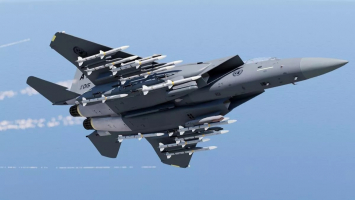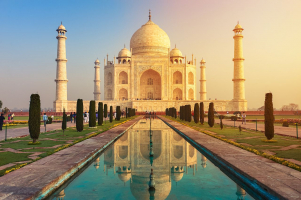Top 10 Most Popular Horse Breeds In The World
Horse is inherently an animal familiar and close to humans. They are often used for racing, working in the fields, herding sheep, oxen or pulling carts and ... read more...plowing. They are our close companions on every road. Let's Toplist list the most popular horse breeds in the world!
-
One of the most popular horse breeds in the world is the American Quarter Horse, sometimes known as the Quarter Horse, which is a breed of horse that specializes at short-distance sprinting. Its moniker comes from its propensity to outrun other horse breeds in races lasting no more than a quarter mile; some have been recorded traveling as fast as 44 mph (70.8 km/h). The 1600s are when the Quarter Horse first emerged.
The American Quarter Horse Association, which registered nearly three million American Quarter Horses who are still alive in 2014, is the world's largest breed registry. The American Quarter Horse is currently the most popular breed in the United States. The American Quarter Horse is well known for its performance in rodeos, horse shows, and as a working ranch horse in addition to its fame as a racehorse.
The American Quarter Horse has a compact body that is ideal for the complex and rapid movements needed in reining, cutting, working cow horses, barrel racing, calf roping, and other western riding competitions, especially those involving live cattle. The American Quarter Horse is employed in a variety of various equestrian pursuits, including driving, show jumping, dressage, hunting, and English disciplines.
Photo: wikipedia 
Photo: thesprucepets.com -
Horses of the Arabian Peninsula are known as Arabian or Arab horses. One of the most recognizable horse breeds in the world, the Arabian has a distinctive head form and a high tail carriage. A horse breed that resembles modern Arabians can be seen in the Middle East as far back as 4,500 years ago, making it one of the oldest breeds. Arabian horses have historically been transported throughout the globe through trade and conflict, and they have been utilized to enhance other breeds by bringing speed, finesse, endurance, and a strong bone to them. Nearly every breed of riding a horse in existence today has ancestry from the Arabian horse.
The heads of Arabian horses are elegantly wedge-shaped, they have a broad forehead, big eyes, big nostrils, and short muzzles. The majority have a recognizable concave, or "dished," profile. The Bedouin refer to this tiny forehead protrusion between the eyes as the "jibbah," and it adds more sinus space, which is thought to have aided the Arabian horse in its original dry desert habitat. An arched neck with a broad, well-positioned windpipe resting on a neat, clean throatlatch is another trait of the breed. The Bedouin referred to this poll and throatlatch configuration as the mitbah or mitbeh. It should be long in the ideal Arabian to allow for the windpipe and bridle flexibility.
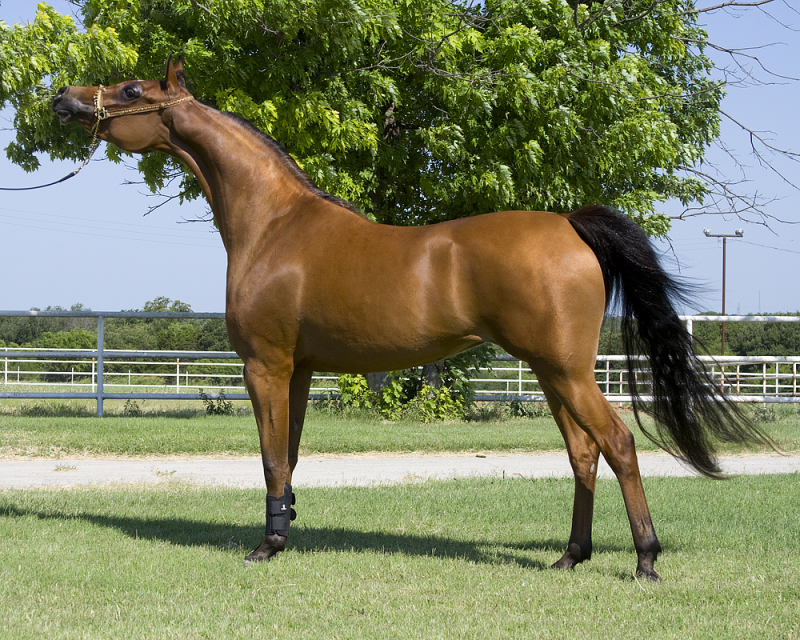
Photo: wikipedia 
Photo: meer.com -
A horse breed called a Thoroughbred is most well-known for being used in horse racing. Although any purebred horse breed may occasionally be referred to as a thoroughbred, the term strictly exclusively applies to this breed. The "hot-blooded" horses famed for their agility, speed, and spirit are known as thoroughbreds.
The height of a typical Thoroughbred is between 157 and 173 cm, with an average of 1163 cm. Most frequently, they are gray, dark gray, dark bay, or brown. Roan and palomino are two less popular hues acknowledged in the US. Although it is extremely uncommon, white is a distinct color from gray. White may mark the lower legs and the face, but it rarely shows up on the body. Mainstream breed registries do not accept coat patterns like Pinto or Appaloosa, which have several colors on the body.
Although they are bred for other riding sports like show jumping, combined training, dressage, polo, and fox hunting, thoroughbreds are mostly utilized for racing. As a result of their frequent crossbreeding, the Quarter Horse, Standardbred, Anglo-Arabian, and other warmblood breeds, as well as many others, have been developed.
Photo: animalife.co.uk 
Photo: animalife.co.uk -
The next position on the list of the most popular horse breeds in the world is the Warmbloods which are a collection of middle-weight horse breeds and kinds that largely hail from Europe and are registered with associations that emphasize breeding for equestrian activity and have open studbook policies. The word sets these horses apart from both sophisticated light saddle horses and big draft horses like the Thoroughbred, Arabian, and Akhal-Teke. The word "warmblood" does not indicate that modern warmbloods are direct offspring of "cold" and "hot," despite the fact that they are descended from heavy farming types that were gradually improved by hotblood influence.
Since the end of World War II, when mechanization rendered agricultural horses obsolete and leisure riding increased in popularity in the western world, warmbloods have grown in popularity. The heavy warmbloods, or ancestors of modern warmbloods, are kept alive by specific groups. The heavy warmbloods have discovered success in combined driving and as family horses.
The majority of warmbloods originated in continental Europe, particularly in Germany. Although recent DNA analyses of early horses have refuted this theory, it was formerly believed that the warmblood type, which emerged in continental Europe, sprang from wild, native proto-warmblood forebears known as the Forest Horse.
Photo: pinterest.com 
Photo: ehorses.com -
One of the first horse breeds to be established in the US was the Morgan. Following in the footsteps of the foundation sire Figure, who was later given the name Justin Morgan in honor of his most well-known owner, Morgans played numerous roles in 19th-century American history, including those of coach horses, harness race horses, all-purpose riding horses, and cavalry horses on both sides of the American Civil War.
Major American breeds including the American Quarter Horse, Tennessee Walking Horse, and Standardbred have all been impacted by Morgans. They were exported during the 19th and 20th centuries, including to England, where a Morgan stallion had an impact on the development of the Hackney horse. To preserve and advance the Morgan breed, the US Department of Agriculture founded the US Morgan Horse Farm close to Middlebury, Vermont, in 1907. The farm was later given to the University of Vermont. Since the first breed registry was created in 1909, several organizations have grown in the US, Europe, and Oceania. In 2005, there were reportedly around 175,000 Morgan horses in existence.
The Morgan is a small, elegant breed that is often bay, black, or chestnut in color, however, they are also available in many other hues, including many pinto varieties. The breed is renowned for its adaptability and is utilized in both English and Western disciplines. The Morgan is the state horse of Massachusetts, the state mammal of Rhode Island, and the official animal of Vermont. The breed has been depicted in works by well-known children's writers including Marguerite Henry and Ellen Feld; Henry's Justin Morgan Had a Horse was later turned into a Disney film.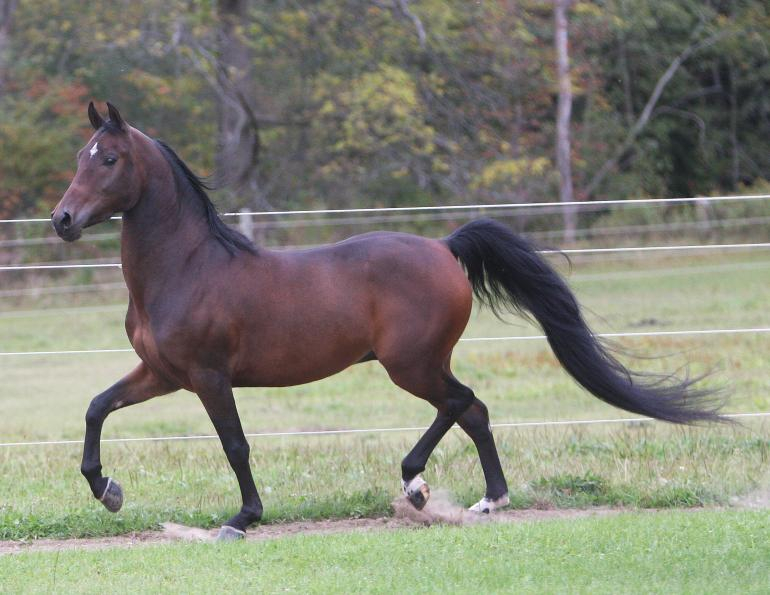
Photo: horsejournals.com 
Photo: horseyhooves.com -
The American horse breed known as the Appaloosa is distinguished by its vivid speckled coat pattern. Due to the impact of several horse breeds over the course of history, the breed has a wide variety of body forms. Genetically, each horse's color pattern is the product of different spotting patterns layered on top of a certain base coat color. Those who research the genetics of horse coat color are interested in the Appaloosa's color pattern since it and a number of other physical traits are connected to the leopard complex mutation. Equine recurrent uveitis and congenital stationary night blindness, the latter of which has been connected to the leopard complex, are also conditions that are common in appaloosas.
The Appaloosa was designated the official state horse of Idaho in 1975, and it is currently one of the most well-liked breeds in the country. Although it is most recognized for being a stock horse used in a variety of western riding disciplines, this breed is adaptable and has representatives in many other equestrian sports. The Florida State Seminoles' mascot is an appaloosa, which has appeared in numerous films. Other horse breeds, such as the Pony of the Americas, the Nez Perce Horse, and various gaited horse types, have been impacted by Appaloosa bloodlines.

Photo: historyextra.com 
Photo: horseandhound.co.uk -
Ponies are little horses. A pony can be a little horse with a particular conformation and temperament, or it might be a horse that is under an approximate or exact height at the withers. A pony may have a thicker coat, mane, and tail as compared to a larger horse, as well as proportionally shorter legs, a wider barrel, heavier bone, a thicker neck, and a shorter, broader head. Pony is a shortened version of the old French term planet, which means a foal, or young, immature horse.
Historically, little horses and ponies were employed for riding, driving, and as pack animals. Many were used as pit ponies during the Industrial Revolution, especially in Great Britain, to pull coal cargoes out of the mines. They may be retained as child mounts today, for competitive or leisure riding or driving, or for cultural or conservation purposes.
Ponies are typically thought to be friendly and intelligent. They can also be regarded as obstinate or crafty. Children learning to ride should use ponies that have been properly trained. Adults can ride larger ponies because they are often powerful for their size. Many organizations today define a pony as a mature horse that is under a specific wither height, which can range from roughly 142 cm to almost 150 cm. No matter the animal's height, certain breeds identify it as either a horse or a pony based on its lineage and phenotype. Pony is a term of endearment often used to refer to a full-sized horse.
Photo: istockphoto.com 
Photo: wallpaperaccess.com -
The gaited horse breed known as the Tennessee Walking Horse is distinguished by its distinctive four-beat running walk and showy gait. It is a well-liked riding horse because of its easygoing nature, graceful gaits, and sure footing. The Tennessee Walking Horse is frequently seen in the show ring, but they are also well-liked as trail and pleasure horses that can be used with both English and Western gear. In addition, to live performances, the Tennessee Walking Horse can be seen in films, TV shows, and other media.
"Refined and graceful, yet solidly constructed" is how one person describes the contemporary Tennessee Walking Horse. The horse is tall and has a long neck. Small, strategically positioned ears are on the well-defined head. The breed weighs 900 410 to 540 kg and is typically 150 to 173 cm tall. With a short back and tight coupling, the shoulders and hips are long and sloping. It is okay for the hind legs to be slightly over-angulated, cow-hocked, or sickle-hocked because the hindquarters are "average thickness and depth," well-muscled, and these characteristics are present. Tennessee Walker is one of the most popular horse breeds in the world.
Photo: horseguard.com 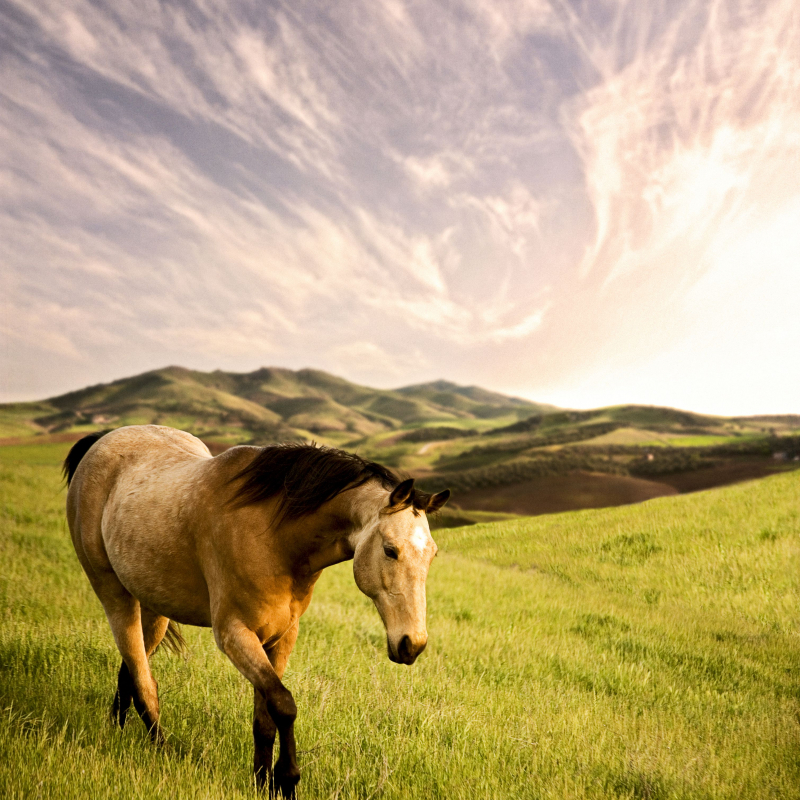
Photo: thesprucepets.com -
The American Paint Horse is a breed of horse that combines a pinto spotting pattern of white and dark coat colors with the structural traits of a western stock horse. The American Paint Horse Association (APHA) breed registry, which sprang from a basis of spotted horses with Quarter Horse and Thoroughbred genetics, is currently one of the biggest in North America. The registry recognizes the American Paint Horse as a distinct horse breed with unique features, not just a color breed, and permits some non-spotted animals to be listed as "Solid Paint Bred".
Every Paint Horse has a unique mixture of white and another color from the equine color wheel. Horses with white spots mixed with black, bay, brown, chestnut, or sorrel are the most prevalent. Horses with dilution gene-influenced spot colors, such as palomino, buckskin, cremello, perlino, pearl or "Barlink factor," champagne, various roan hues, or various shades of dun, including grullo, are less prevalent. Paints can also have the gray gene, developing spots that eventually turn into white hair while still having pigmented skin beneath the previously black spots.
Except for the Appaloosa's distinctive leopard complex patterning, which can be found almost anywhere on the body of the Paint, spots can be of any size or shape. Despite having a wide range of colors, markings, and underlying genetics, Paints can be classified into only four distinct coat patterns: overo, tobiano, tovero, and solid.

Photo: soc-pet.com 
Photo: thesprucepets.com -
The next position on the list of the most popular horse breeds in the world is the Andalusian. A horse breed from the Iberian Peninsula, where its ancestors lived for many centuries, is the Andalusian, also called the Pure Spanish Horse. Since the 15th century, the Andalusian has been recognized as a unique breed, and over time, its conformation has barely changed. It has a long history and has been coveted by the nobles because of its skill as a combat horse. The Spanish government utilized the breed as a diplomatic weapon, and rulers all over Europe rode and possessed Spanish horses.
Warfare, illness, and crossbreeding drastically decreased herd numbers during the 19th century, and despite a slight recovery in the late 19th century, the trend persisted until the early 20th century. Even though the breed has a small population, exports of Andalusians from Spain were prohibited until the 1960s. However, the breed has since spread globally. More than 185,000 Andalusians had registered as citizens as of 2010.
Spanish horses are graceful and well-built. Breed members have medium-sized skulls that are either straight or slightly convex in profile. Profiles with extreme convexity and concavity are frowned upon in the breed and are disqualified at breed competitions. Long and broad necks connect to sharply marked withers and a huge chest. They have a well-rounded croup, broad, muscular hindquarters, and a short back. The breed is known for its lively gaits and clean, free of injuries or blemishes, legs. The legs are not overly feathered, but the mane and tail are thick and lengthy. While still bright and sensitive, Andalusians have a reputation for being docile. They are quick learners, responsive, and cooperative when handled with respect.
Photo: horseandhound.co.uk 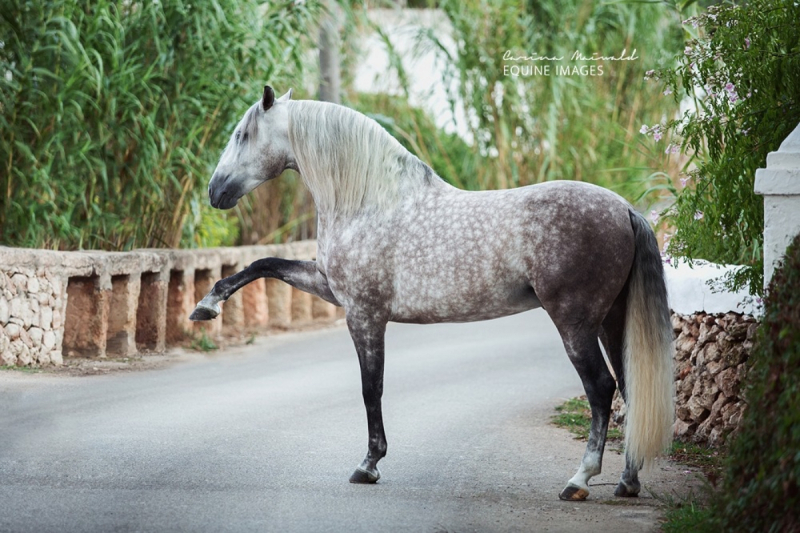
Photo: spanish-horse-boutique.com

















